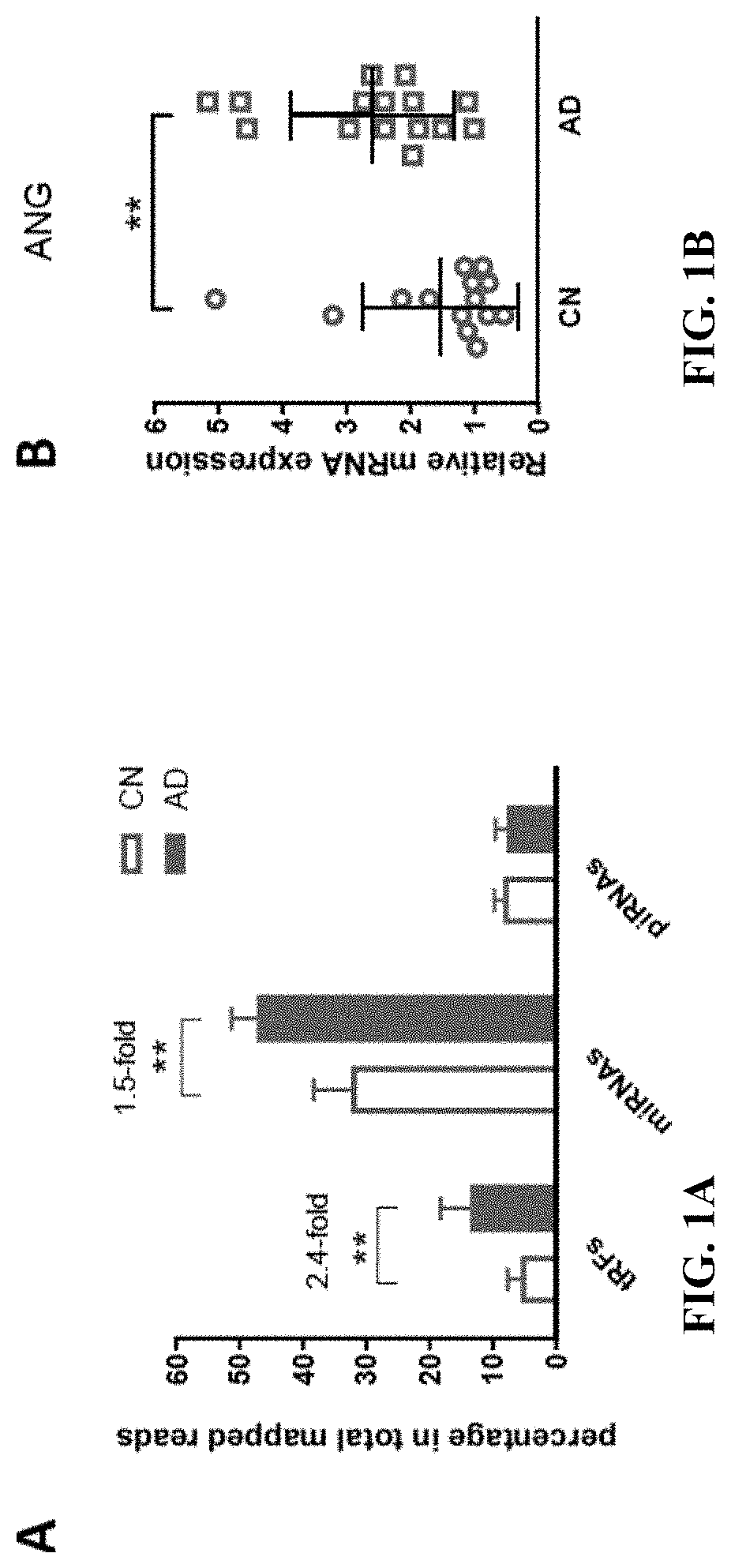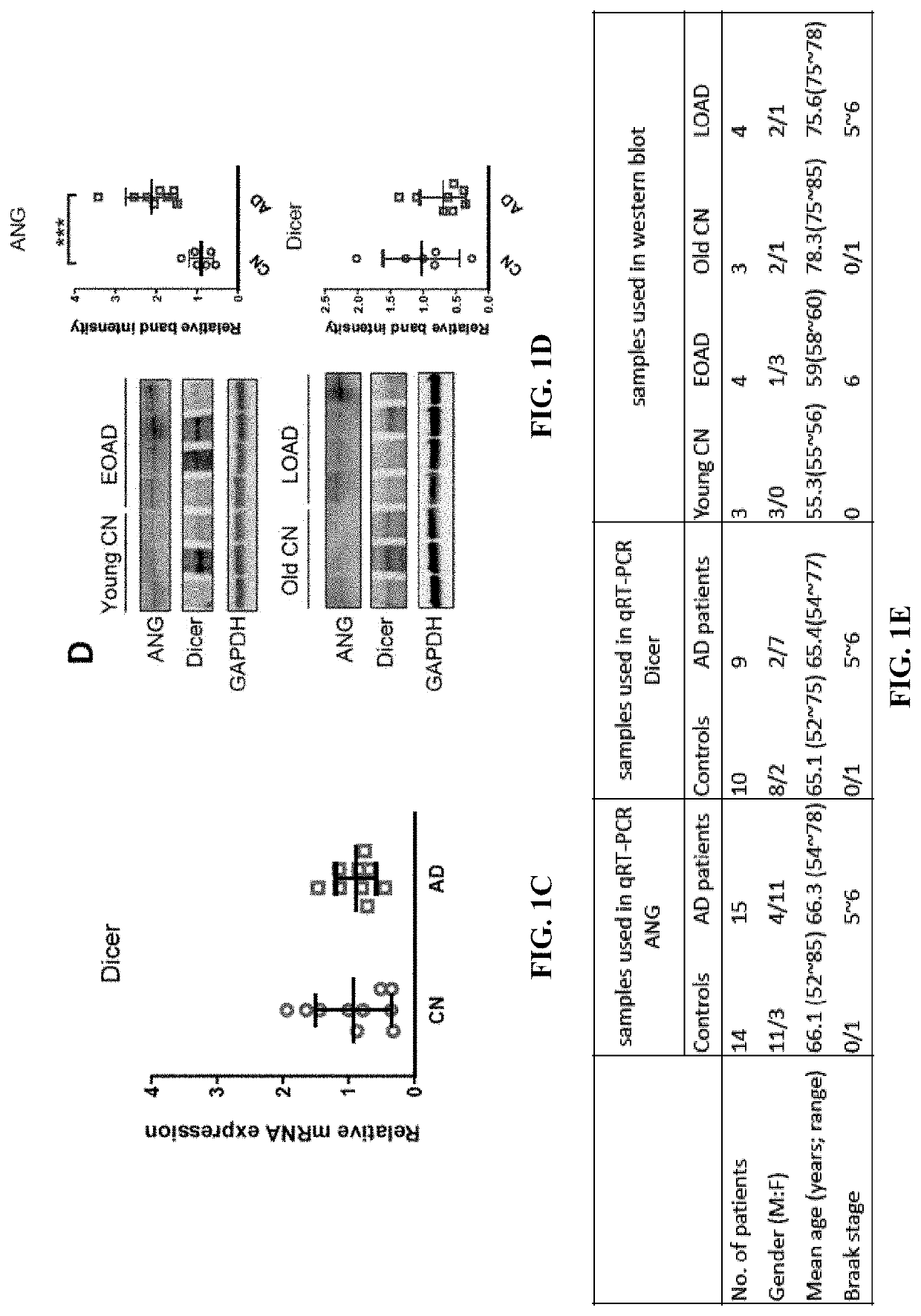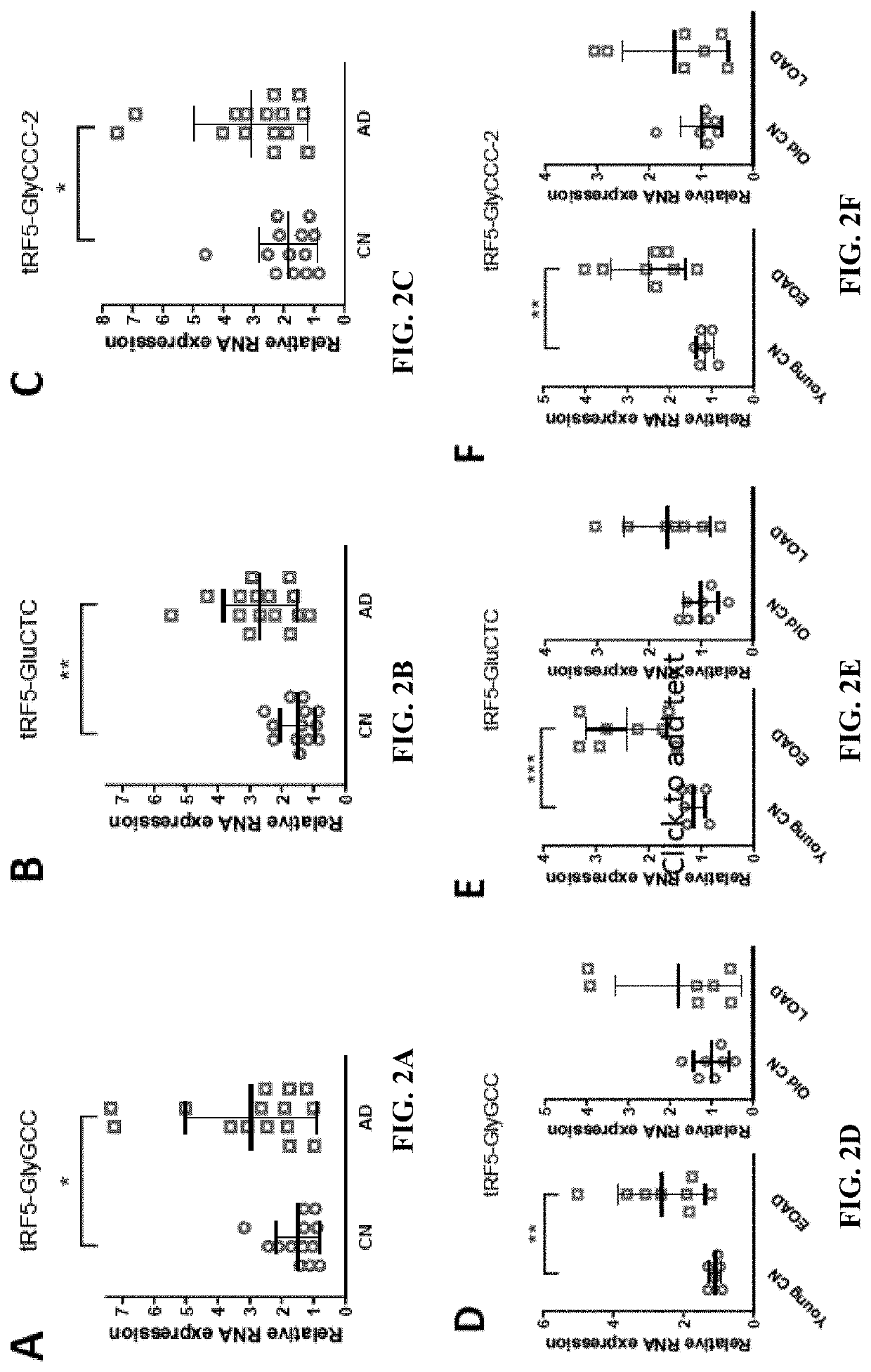tRNA-Derived Fragments as Disease Biomarkers and Neuropathological Regulators in Alzheimer's Disease
a technology of neuropathological regulators and derived fragments, applied in the field of biomarkers, can solve the problems of elusive mechanisms underlying ad onset, and achieve the effect of reducing nop2/sun rna nsun2 or increasing angiogenin or angiogenin activity
- Summary
- Abstract
- Description
- Claims
- Application Information
AI Technical Summary
Benefits of technology
Problems solved by technology
Method used
Image
Examples
example 1
[0056]Recent advances in high-throughput sequencing revealed that 98% of human transcriptional products are non-coding RNAs (ncRNAs) [4]. Based on their length, ncRNAs can be roughly divided into small ncRNAs (sncRNAs) and long ncRNAs (lncRNAs, >200 nt) [5]. While some evidence supports the role of ncRNAs in AD pathogenesis, only limited types of ncRNAs are implicated [6-10]. The roles of many emerging ncRNAs in AD have not been studied. tRNA-derived RNA Fragments (tRFs) is a recently discovered family of sncRNAs. Soon after the discovery, they were recognized to be an important regulator of many diseases, such as cancer, infectious diseases, metabolic diseases, and neurological diseases [11-18]. However, whether tRFs contribute to human AD progression is not known.
[0057]To determine the importance of tRFs in AD progression, the inventors re-analyzed the online sequencing sncRNA data for the brain tissues of AD patients (GSE48552), with special attention to “ignored” tRFs. The inven...
PUM
 Login to view more
Login to view more Abstract
Description
Claims
Application Information
 Login to view more
Login to view more - R&D Engineer
- R&D Manager
- IP Professional
- Industry Leading Data Capabilities
- Powerful AI technology
- Patent DNA Extraction
Browse by: Latest US Patents, China's latest patents, Technical Efficacy Thesaurus, Application Domain, Technology Topic.
© 2024 PatSnap. All rights reserved.Legal|Privacy policy|Modern Slavery Act Transparency Statement|Sitemap



